Faculty mentors are the North Star of 'Creatives @ the Barnett'
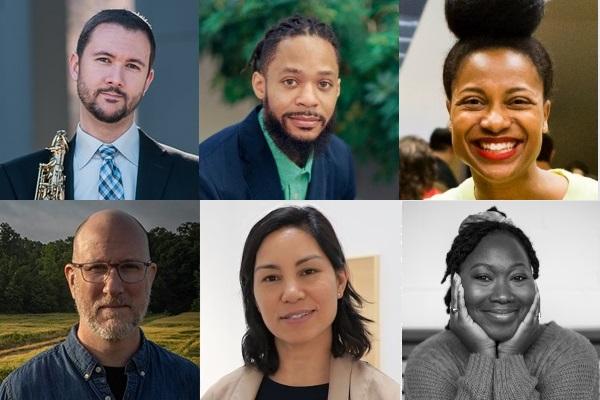
The first year of Creatives @ the Barnett is underway. At the heart of the program are the lessons that its six faculty and staff members have already begun to impart on the 12 student creatives who are using their art to explore the complex theme of homelessness through their joint projects.
Scott A. Jones, a professor and associate director of bands in the school of music, has served as director of the Barnett Center for Integrated Arts and Enterprise for the past three years. Jones spearheaded the launch of the Creatives @ the Barnett program, which connects six pairs of students from different artistic backgrounds under the guidance of six mentors.
Once the goals of the program were laid out, the next task was deciding who should take part in the cohort - and that started with recruiting mentors. Jones says that the first person he approached, a fellow faculty member in the school of music, is a great example of what being an interdisciplinary artist is all about. “Michael René Torres is just an extraordinarily collaborative, interdisciplinary being. He is not only an incredible artist, as a saxophonist, but he's also a composer.”
Jones recounts seeing Torres perform with other Columbus artists as a source of inspiration for what Creatives @ the Barnett would become. “I remember, one of the early performances that I went to see in town with him, was with poets, and Michael is bringing the music side and they're bringing the poetry side and out of this thing comes this brand-new expression of what it is to be alive.”
From there, says Jones, mentors-to-be were mostly brought on board through recommendations from those who had already joined the program. “All six of these people are also deeply student-centered educators - and that's essential in this,” says Jones. “They're just extraordinary, driven people who love the interaction and the messiness of [the artistic process.] That's the perfect kind of attitude that we need to be serving as North Star for these creatives, as they move through this journey.”
The Mentors
Assistant Teaching Professor of Saxophone and Composition; Area Coordinator of Composition, School of Music
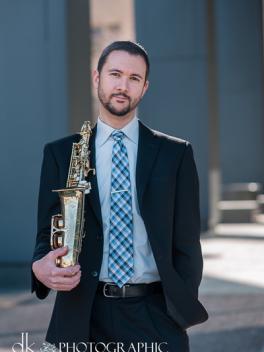
Torres is interested in music that explores the juxtaposition of consonance and dissonance and is often inspired by psychology and poetry. He says that the intersection of composition and other fields of thought has always been a key part of his work - and something he hopes to explore with the student cohort.
“We have students of different personal backgrounds and different academic backgrounds. And they’re bringing these abilities and worldviews to the table to talk about homelessness, a topic that has so many facets to approach. How do you tap into the intersectionalities in your experience and of this experience that maybe you can relate to, even if you haven’t lived it? How do you integrate that with the experience and the talents of your partner? It’s such an important exercise that necessarily reframes how we think and talk about art.”
Torres is the founder and artistic director of the Columbus Ohio Discovery Ensemble (CODE), a non-profit contemporary music ensemble dedicated to the promotion, performance and perception of contemporary concert music in Central Ohio. Additionally, he serves as the program director and as an advisory board member of the Johnstone Fund for New Music which advances the performance of new music for the benefit of the Central Ohio community.
Manager of Community Learning and Experience, Urban Arts Space
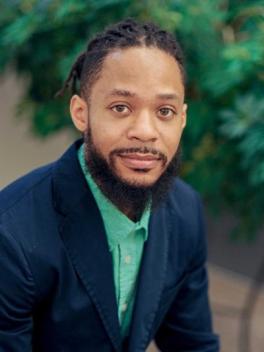
As an artist, Banner advocates for open access, just resource allocation and culturally relevant decisions in arts administration and arts management. As an educator, he supports culturally responsive teaching that accounts for the lived experiences of students. As a researcher, he seeks to encourage more education reform discussions that are grounded in cultural diversity and socioeconomics.
“Art is a social science and therefore, at its core, maintains a social component that reflects life and all its subtle and complex interactions. Understanding this illustrates the importance of art as a social tool and universal language that fosters collaboration on multiple fronts. I hope to impart to the creatives that, as artists, we have a privilege and responsibility to impact social change through dialogue, engagement, and collaboration.”
Banner received his PhD in arts administration, education and policy from The Ohio State University and, as such, says he knows how valuable an education involving the collaborative arts can be to creative minds. “During my time as a doctoral student at Ohio State, I had the honor of being a Barnett Fellow. So I know firsthand the importance of the Barnett Center, in terms of scholarship, citizenship and the arts. That, combined with the amazing leadership of Scott and the wonderful creatives that are on board, made me want to be a part of the project.”
Director of Learning and Public Practice, Wexner Center for the Arts
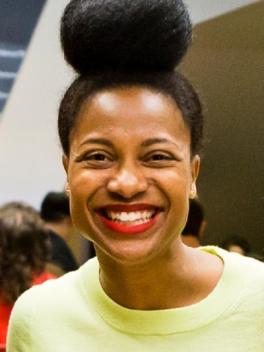
Dionne Custer Edwards oversees four major program areas and has pioneered several groundbreaking education programs—including Pages, an art and writing program—serving hundreds of high school students a year from across central Ohio. That dedication to arts education is one of the things that drew her to joining Creatives @ the Barnett.
“I am excited for the opportunity to be present with the students, with younger creatives. I appreciate that living artists can be present, available and a resource for students looking for that type of mentorship, support, and/or creative community. And I too am learning so much from this experience, so it feels quite reciprocal and generative.”
Embedded in her art and education practices is Custer Edwards’ commitment to work in diversity, equity, inclusion and access, and she says that working with people of different viewpoints and backgrounds is essential to making that work authentic and meaningful.
“I believe there is real value to learning how to listen, have dialogue and work with others in critical and creative work. When learners, younger people, anyone, moving through their education and careers can develop collaborative skills, this can open up new pathways to learning, problem-solving and navigating our humanity in the world with others. Collaboration is a rich concept and can be dynamic and nourishing.”
Associated Faculty, Composition, School of Music
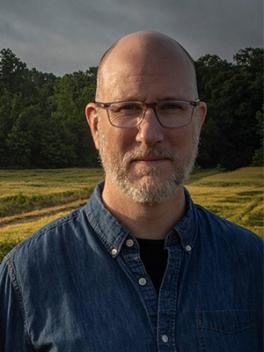
Brian Harnetty is an interdisciplinary sound artist and composer who uses music and voice as a vehicle for social change. He works with sound archives and the communities connected to them, creating encounters that are centered on the locations and cultures that surround recordings and the transformative power of listening. He says that integrating the lived experiences of others into his music is the key to making it rich and powerful.
“When I venture outside of what I know, it opens up new ways of creating. It is sometimes uncomfortable, but always rewarding. Collaborative art is the perfect space to let this vulnerable and important process unfold. In my own work, the people I have collaborated with have become great friends, and the work we created is special. It is also something I never would have created on my own, and so much stronger because of making it together.”
For the past decade, Harnetty’s projects have brought together myth, history, ecology and economy in Appalachian Ohio, informed by his family's roots there. A native of Ohio and an alumnus of Ohio State, Harnetty said, “I hope to impart that the experiences the students are having at Ohio State are just the beginning of a lifetime of creativity. I hope they can begin to see ways to apply what they have learned at Ohio State to their adult lives, regardless of where they end up or what career path they take. Creativity, curiosity, critical thinking and collaboration are all key skills for being an artist, and for being a human in the world.”
Associate Professor, Department of Art
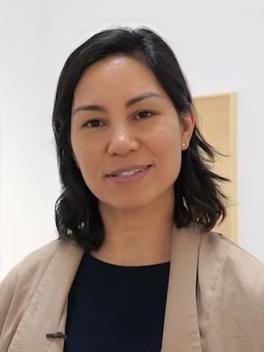
Gina Osterloh's photography, performance art and steel sculptures explore questions of perception and how a viewer perceives difference. Osterloh cites her experiences as a multiracial Filipino American in Ohio as a set of formative experiences that led her to desire to express complex themes through photography. Recent solo exhibitions include her first museum survey Mirror Shadow Shape at the Columbus Museum of Art and Her Demilitarized Zone/Image Without Weapon at MOCA Detroit.
“My work is inherently interdisciplinary, working at the intersections of photography, performance art, visual culture, systems of classification, race and gender. The opportunity to work in collaboration with mentors and the student cohort from across the university is a pedagogical and artistic platform I have been seeking.”
Osterloh says that she wants to help instill in the students the work ethic that collaboration demands while stressing the importance of letting go of preconceived notions of what art should be to discover where the process may lead.
“I have already learned so much from fellow mentors through their workshops with students. I have learned close listening techniques, how to experience a soundscape through walking, how songs we learn in popular culture are learned constructs, how to embrace improvisation. I look forward to closely listening and continuing to learn from both mentors and student cohort members.”
Administrative Associate, Department of Dance
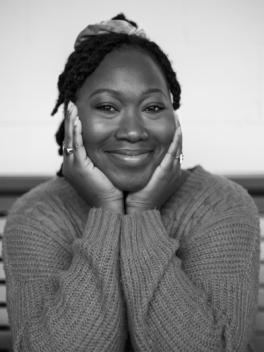
Kylee C. Smith is an artist-scholar who studies Black dance theory, with a particular focus on dance as ritual and how historical stresses are reflected in the bodies of southern Black women. Her current research explores a danced ritual practice which allows her and collaborators to commune with their ancestors to create space for their grief and to (re)imagine alternate futures for coming generations. As such, Smith has a keen awareness of the potential for art to empower artist and viewer alike.
“I want the students to know that their artistic voice matters. I want them to know that they are and will always be artists, no matter how near or far they feel from their personal practice. I hope to learn more about facilitating spaces where young artists can be seen and receive valuable feedback and dialogue while providing the necessary structures for them to clearly scaffold their own growth and development.”
Smith received a BFA and MFA in dance from Ohio State, along with a minor in creative writing. She says her artistic experience here has been key to her journey as a creative.
“I participated in the Buckeye Leadership Fellows program in my undergraduate experience at Ohio State and it was one of the first spaces where I was presented with the opportunity to participate in collaborative projects. This program was foundational in helping me to learn how to represent myself as an artist to folks who do not relate to the world through the same creative lens as I do. I was thrilled at the opportunity to participate in a project like Creatives @ the Barnett that intentionally centers art making as an interdisciplinary site in which we can make meaningful impacts.”
